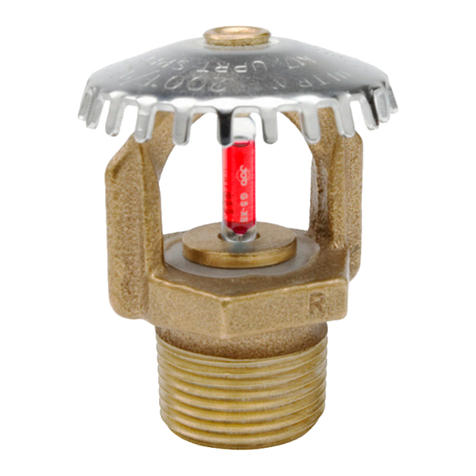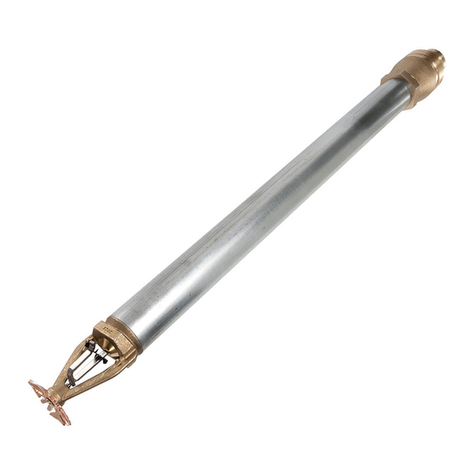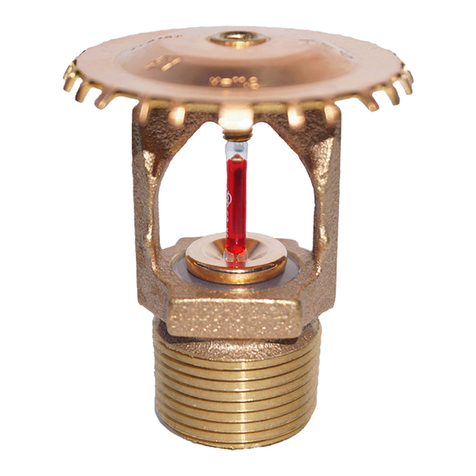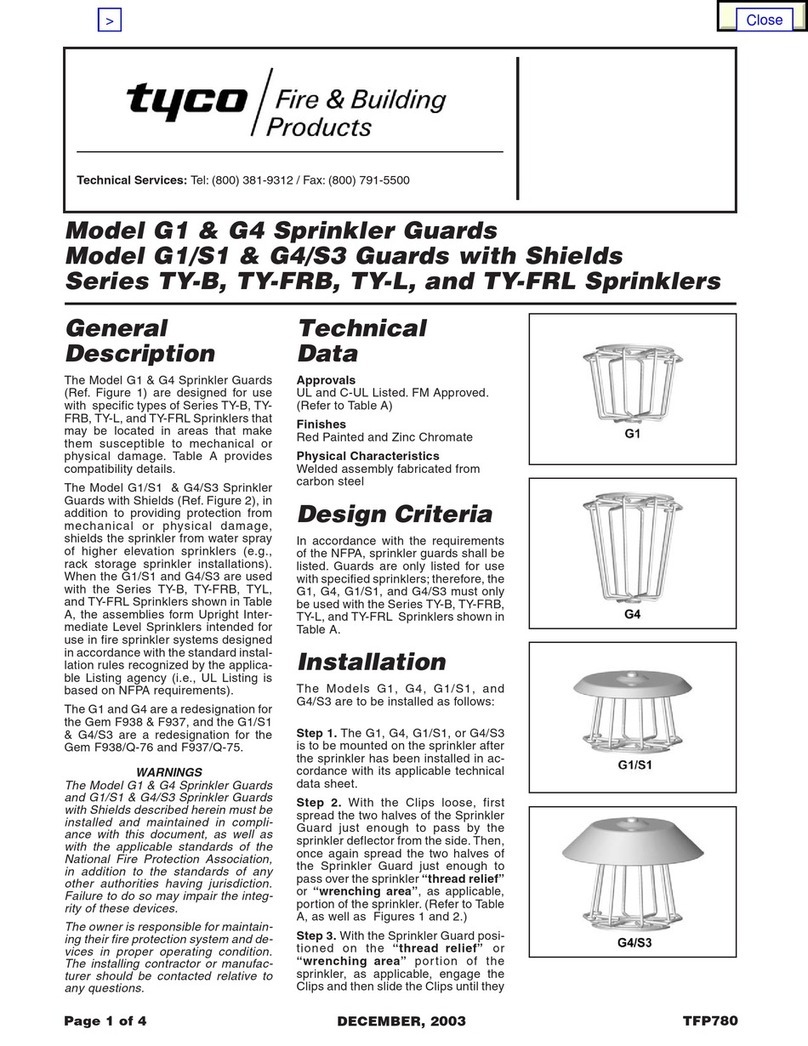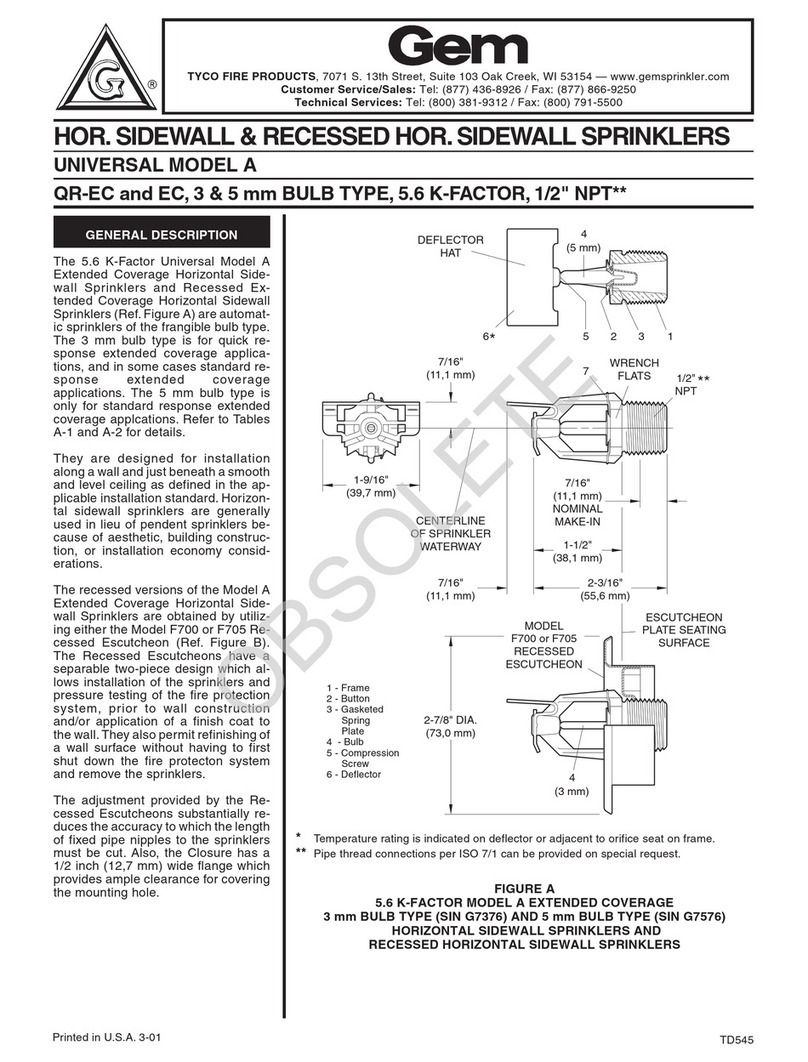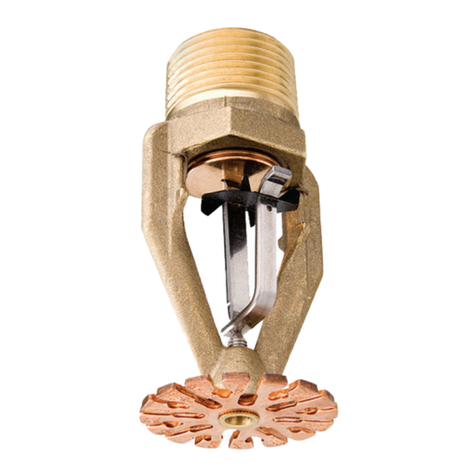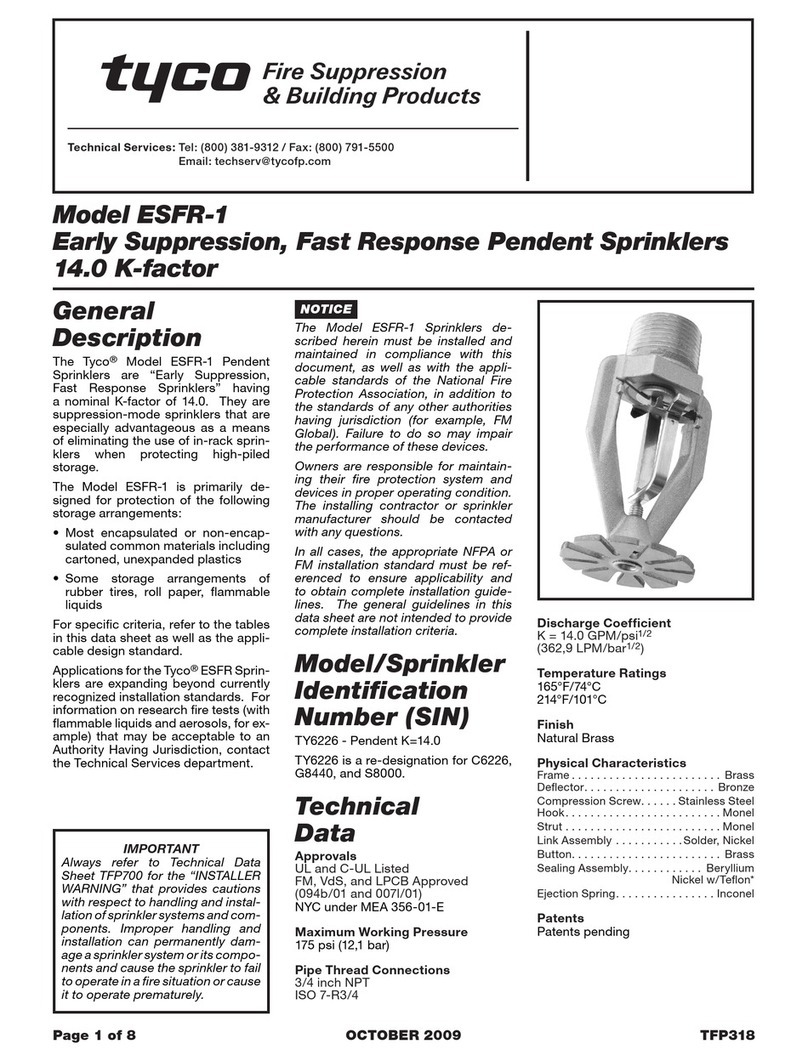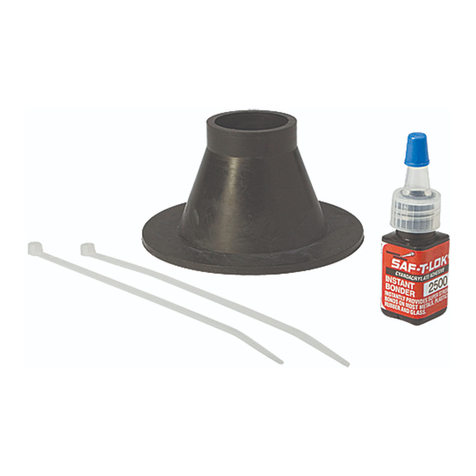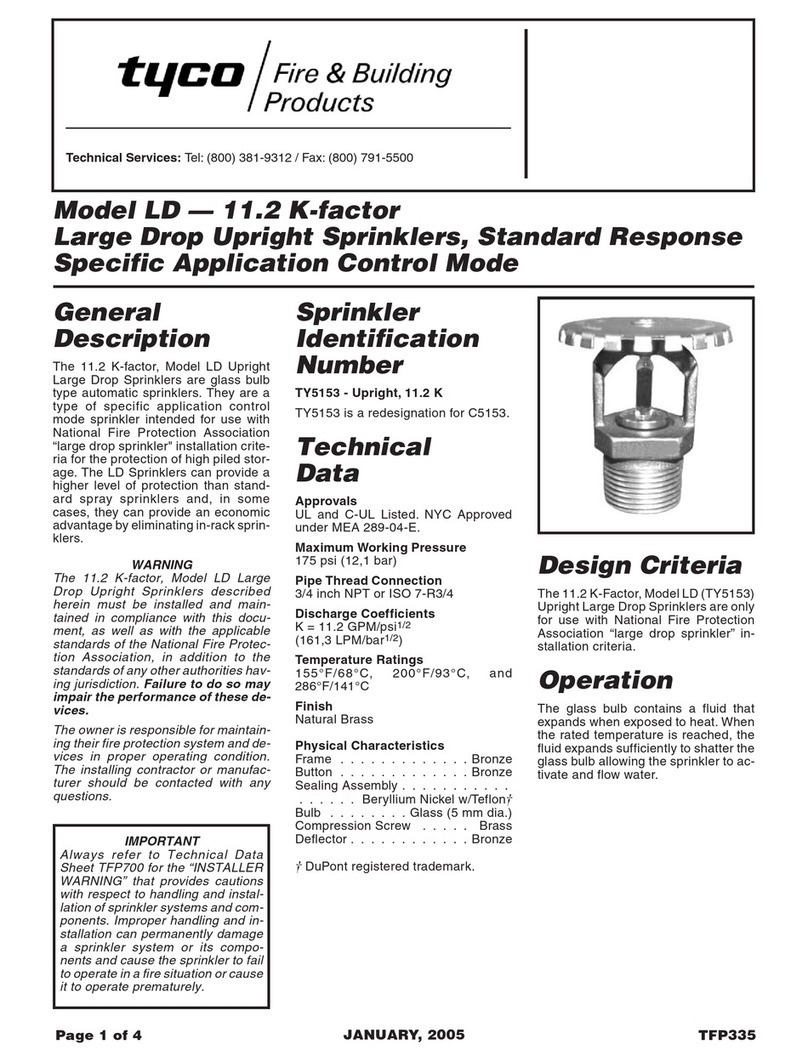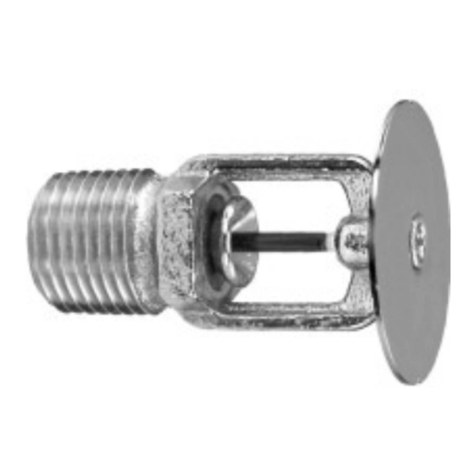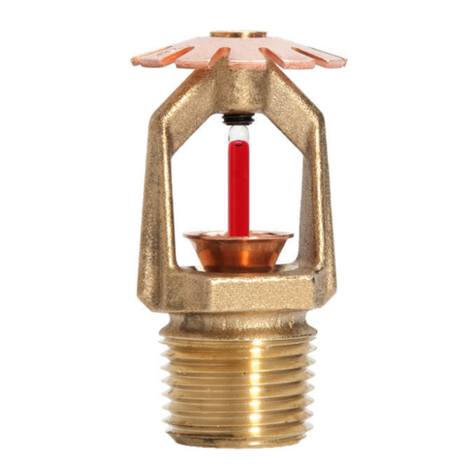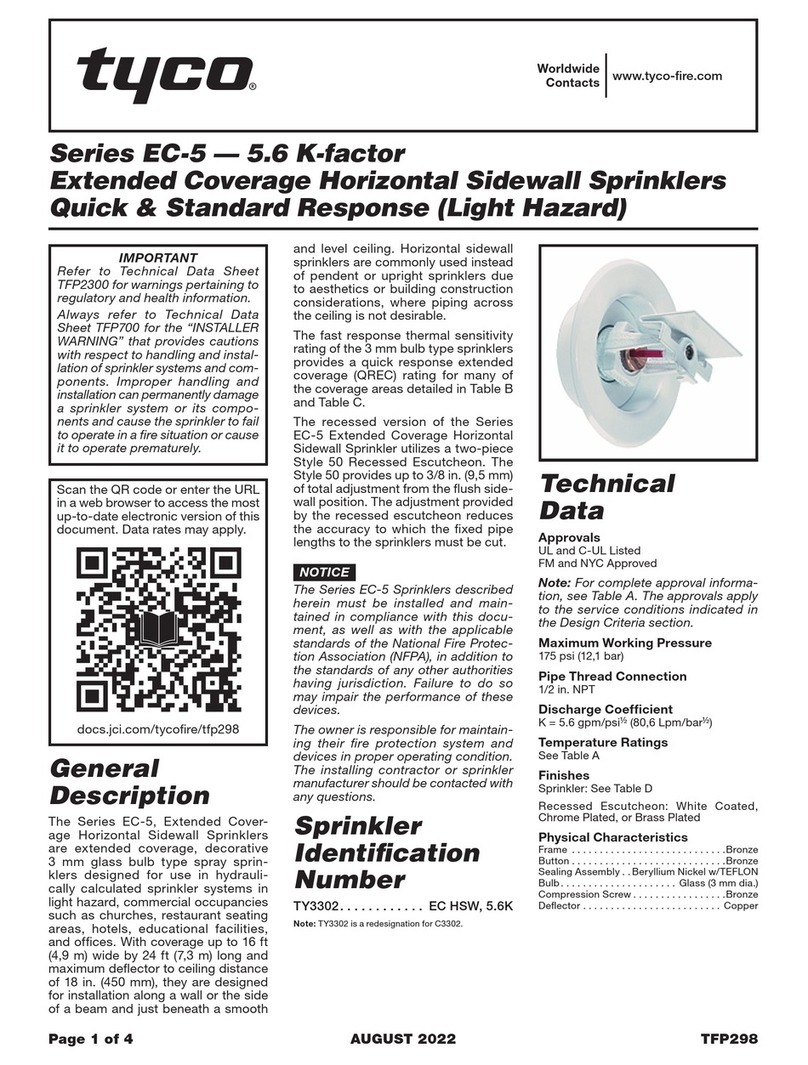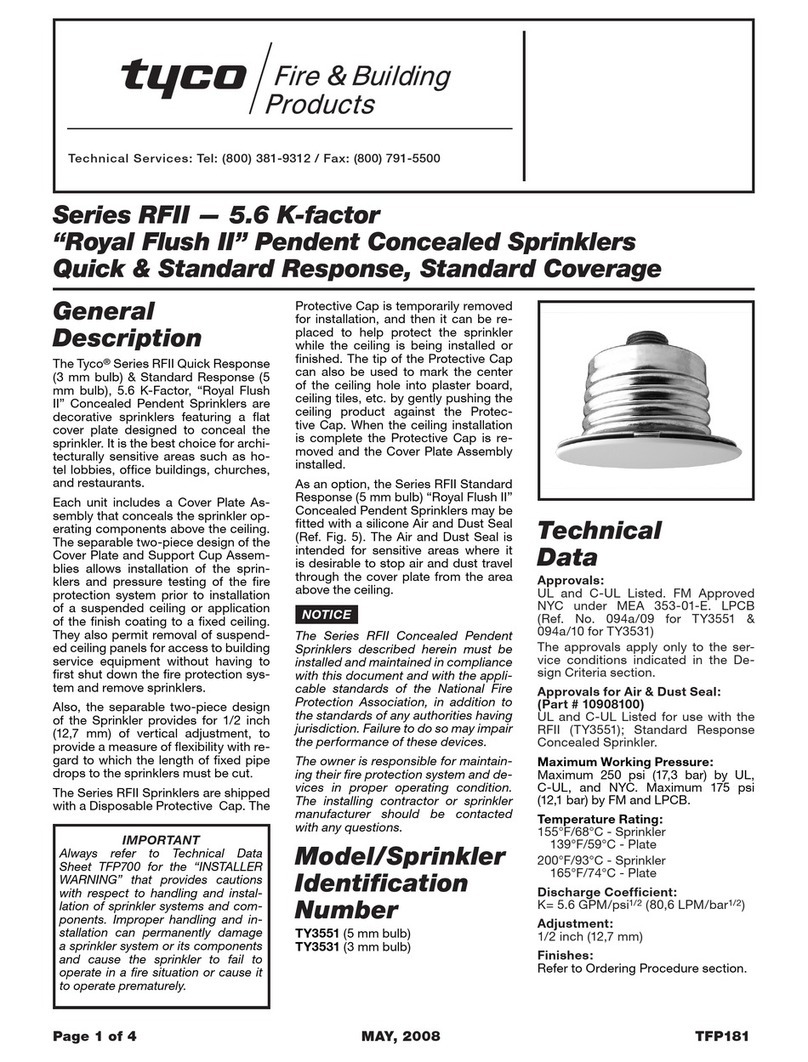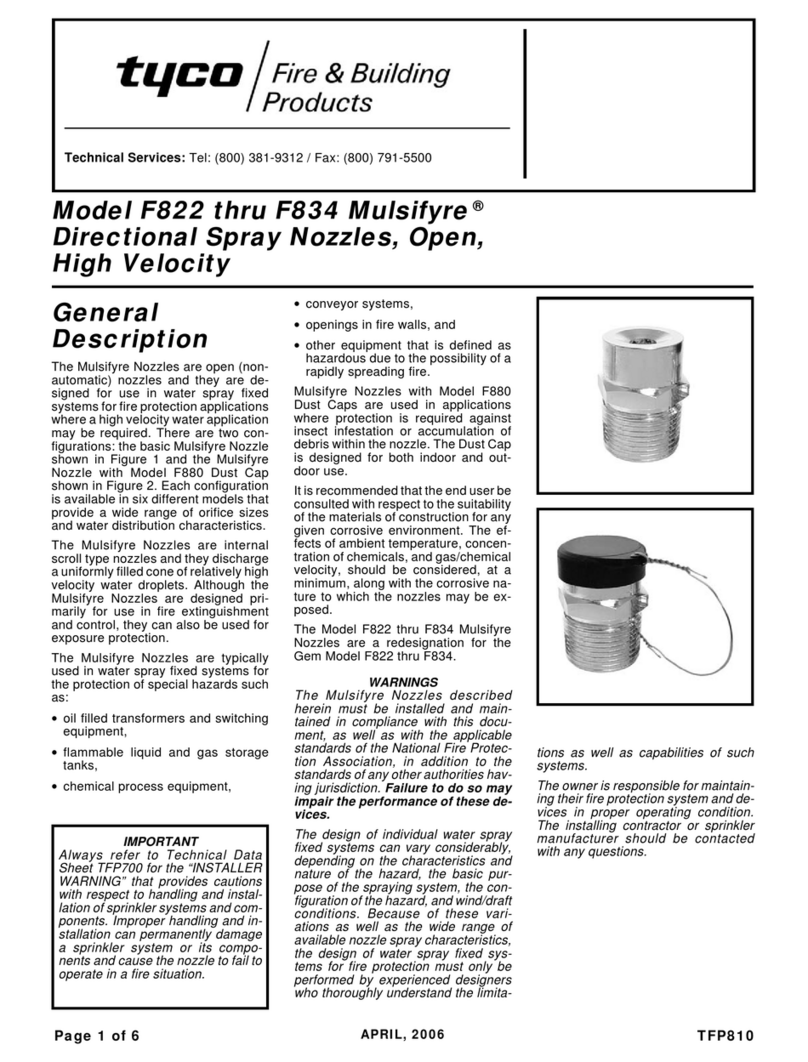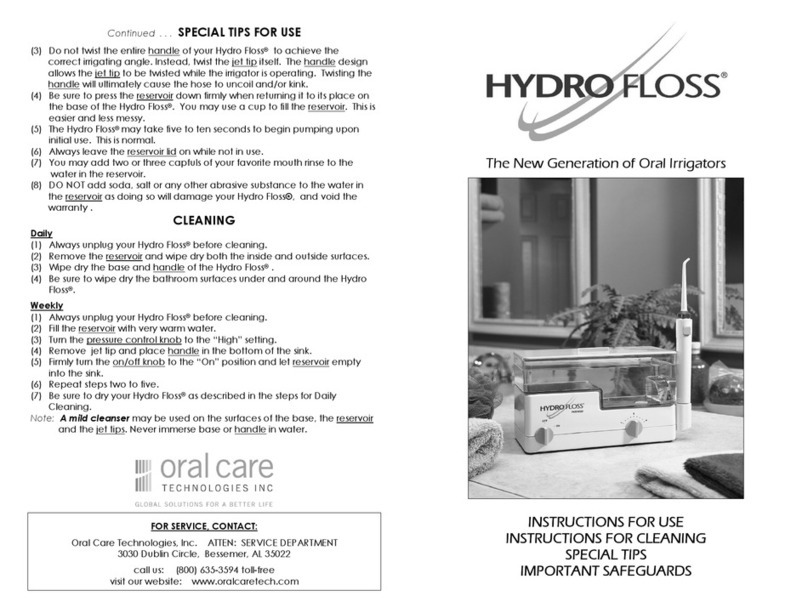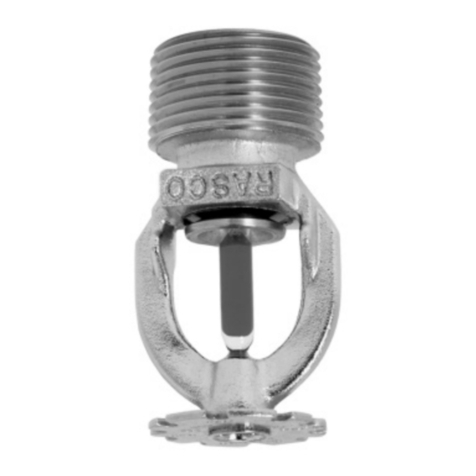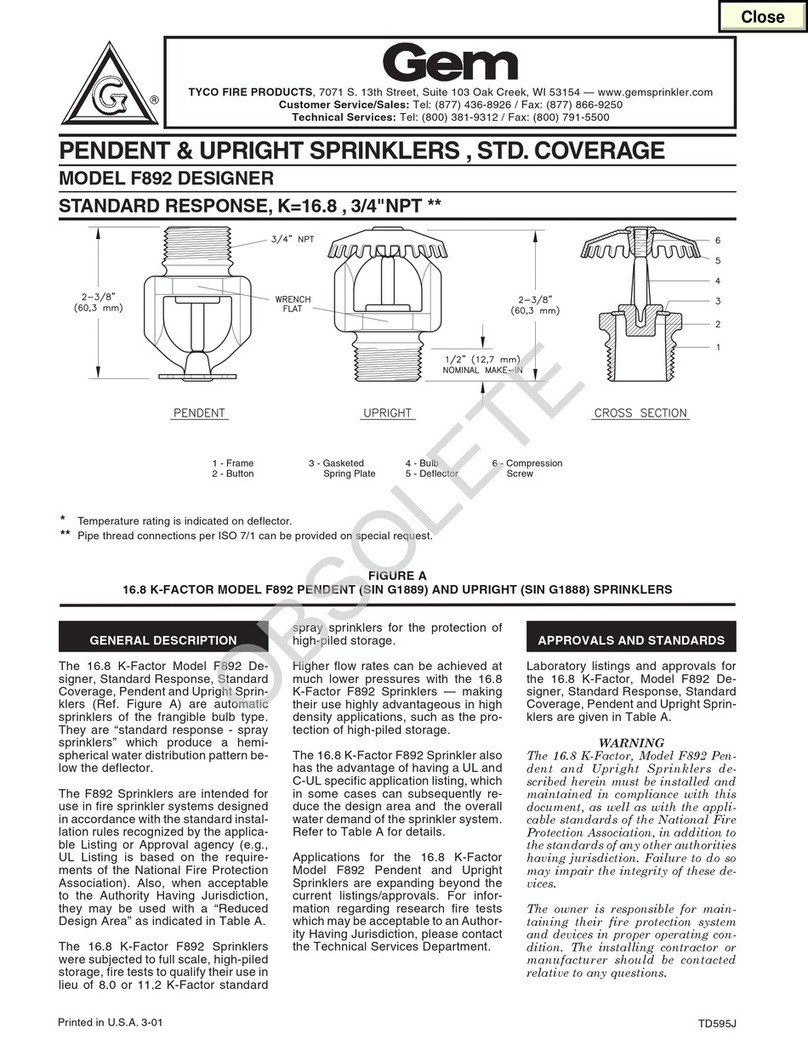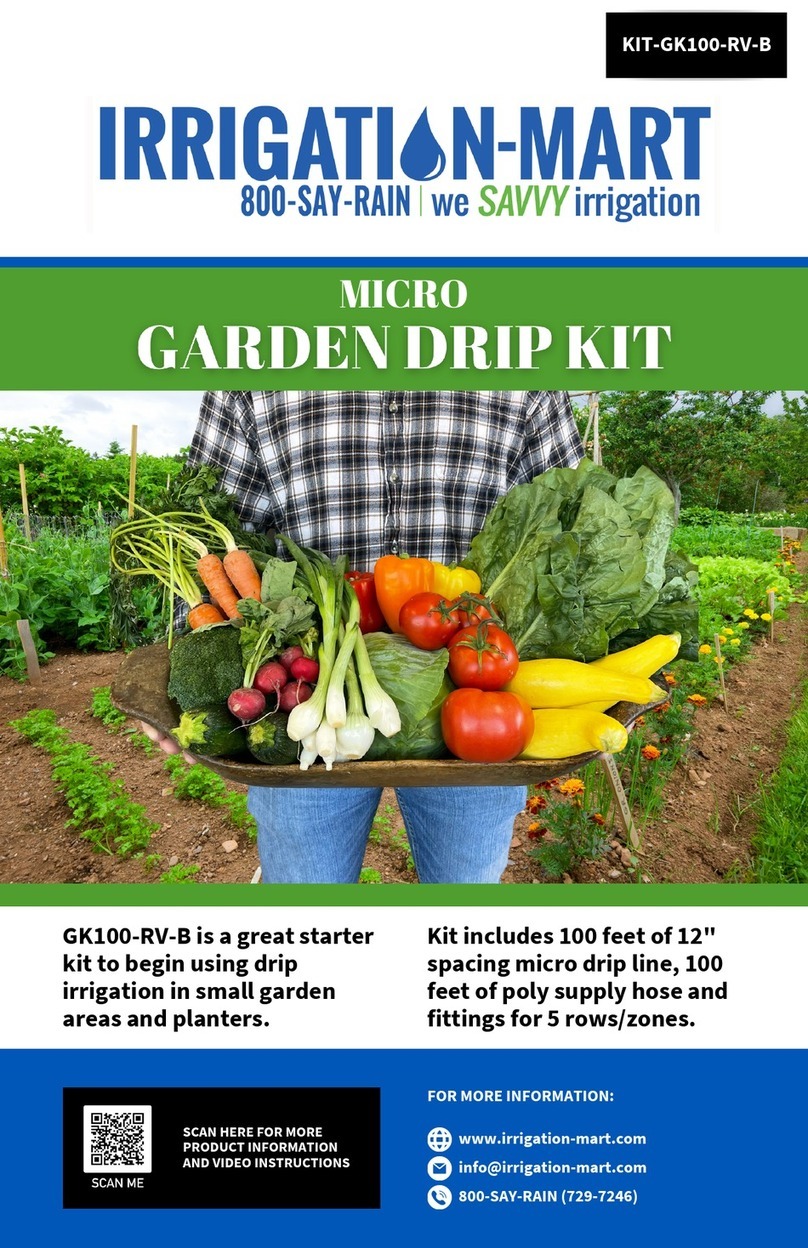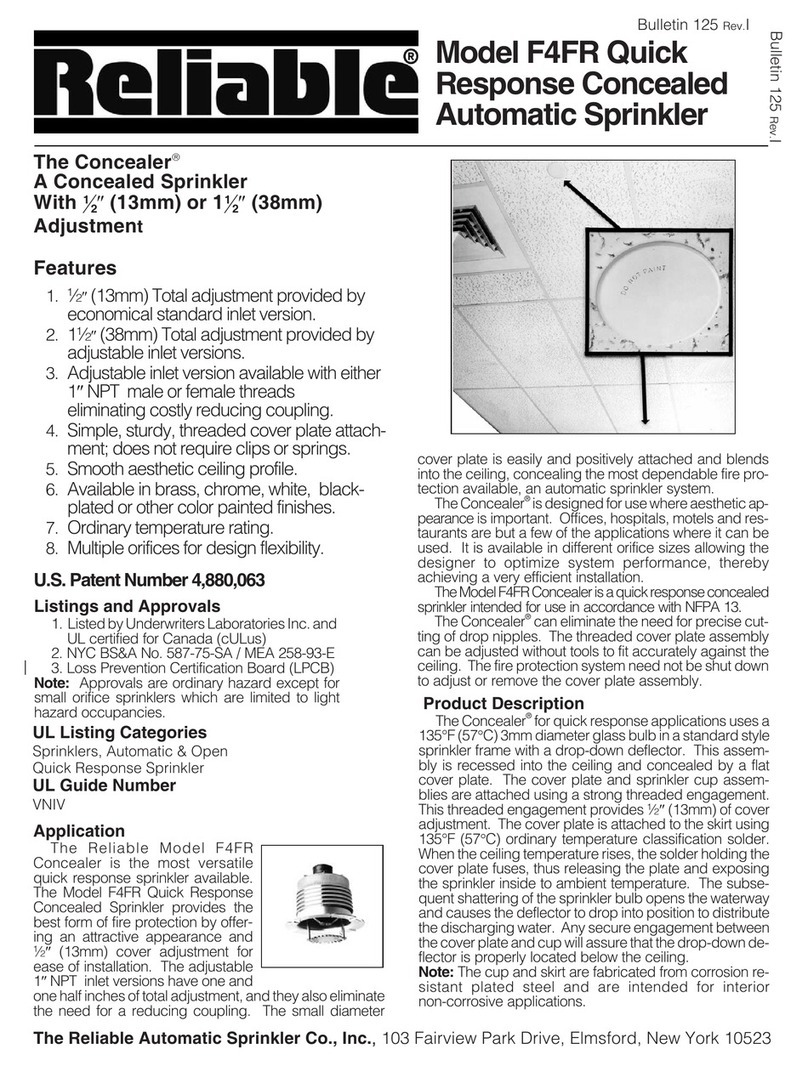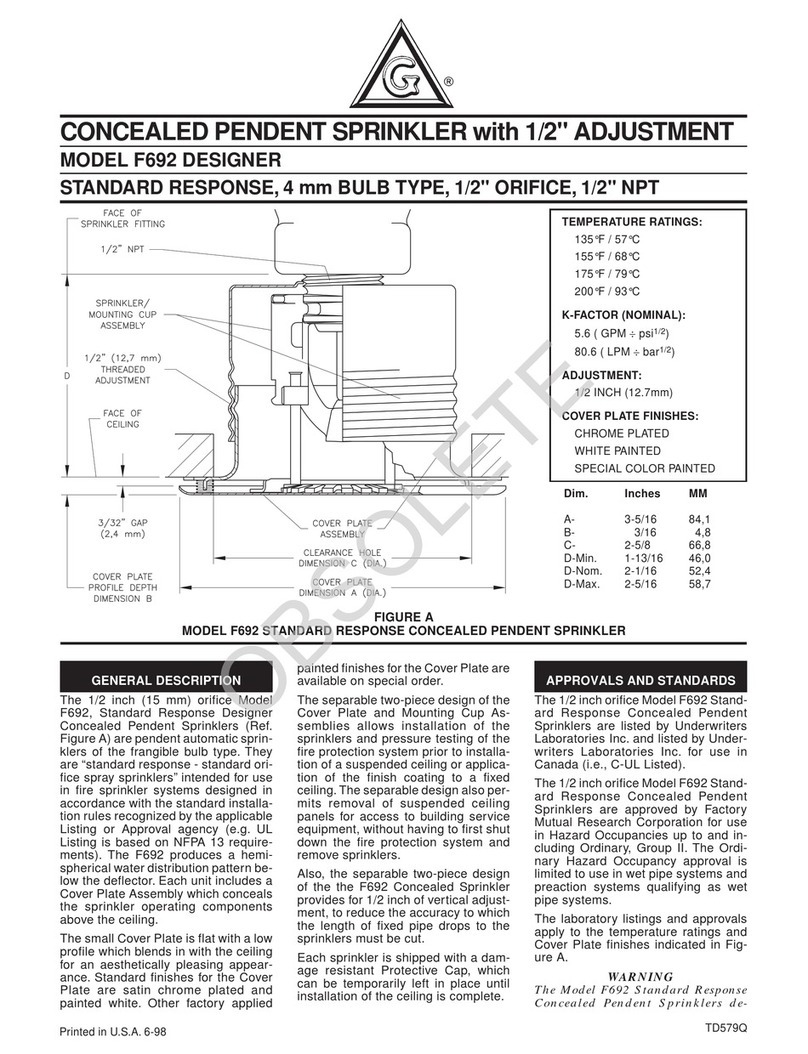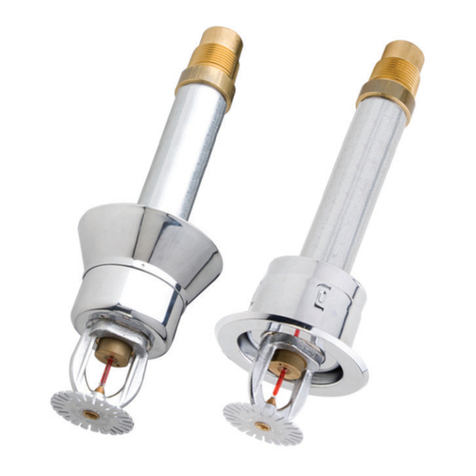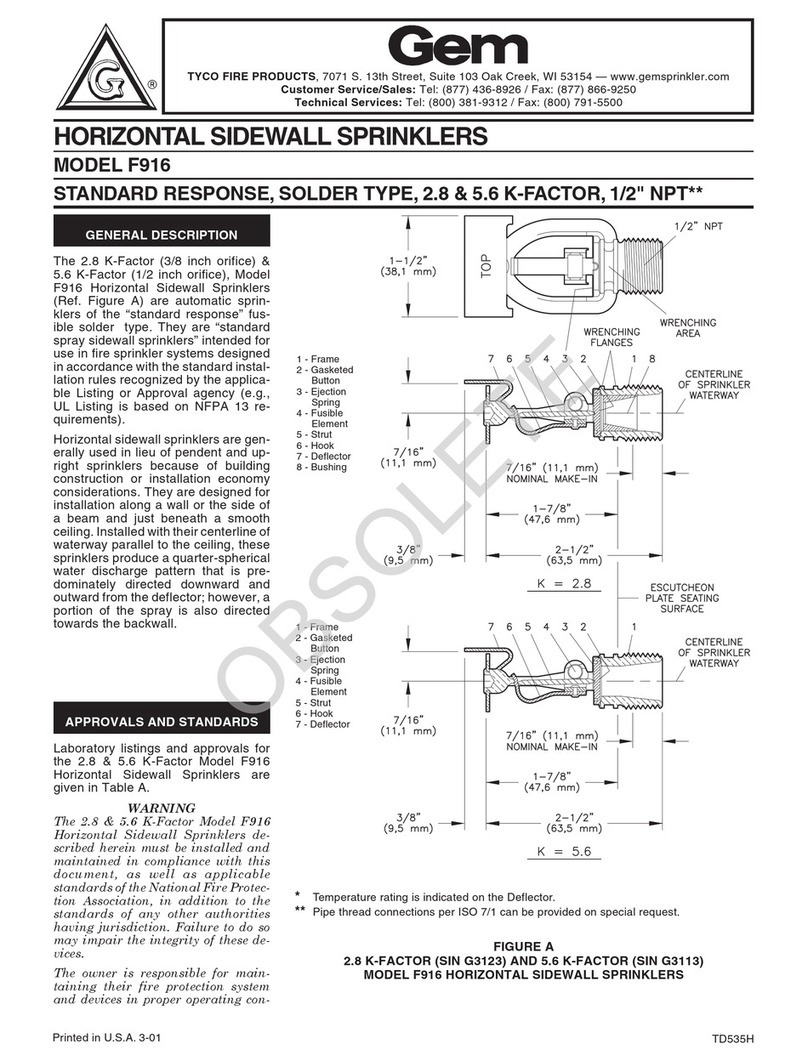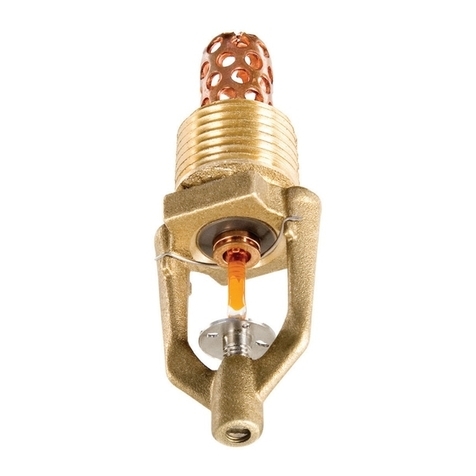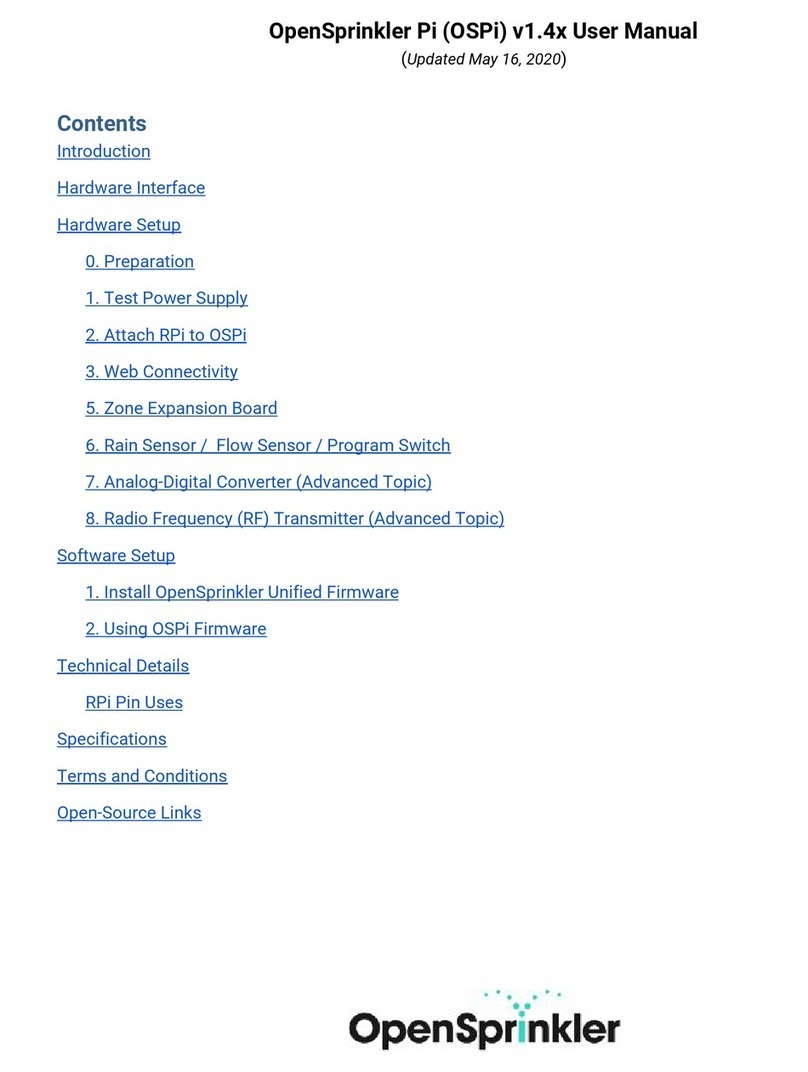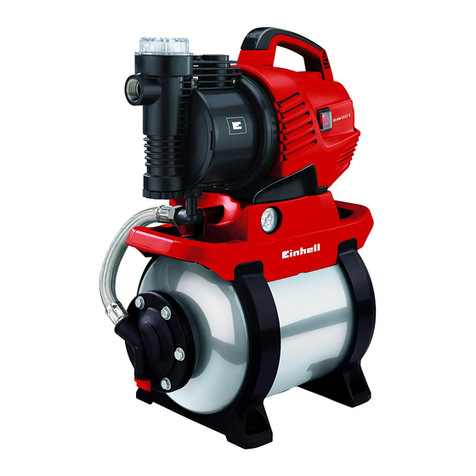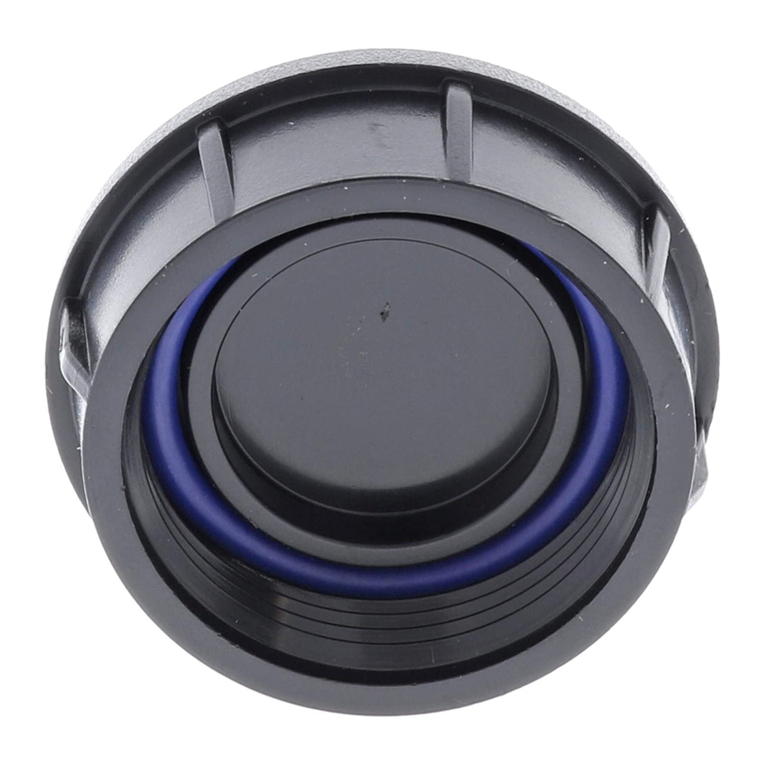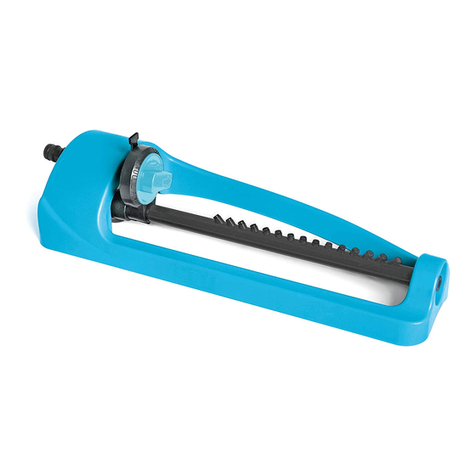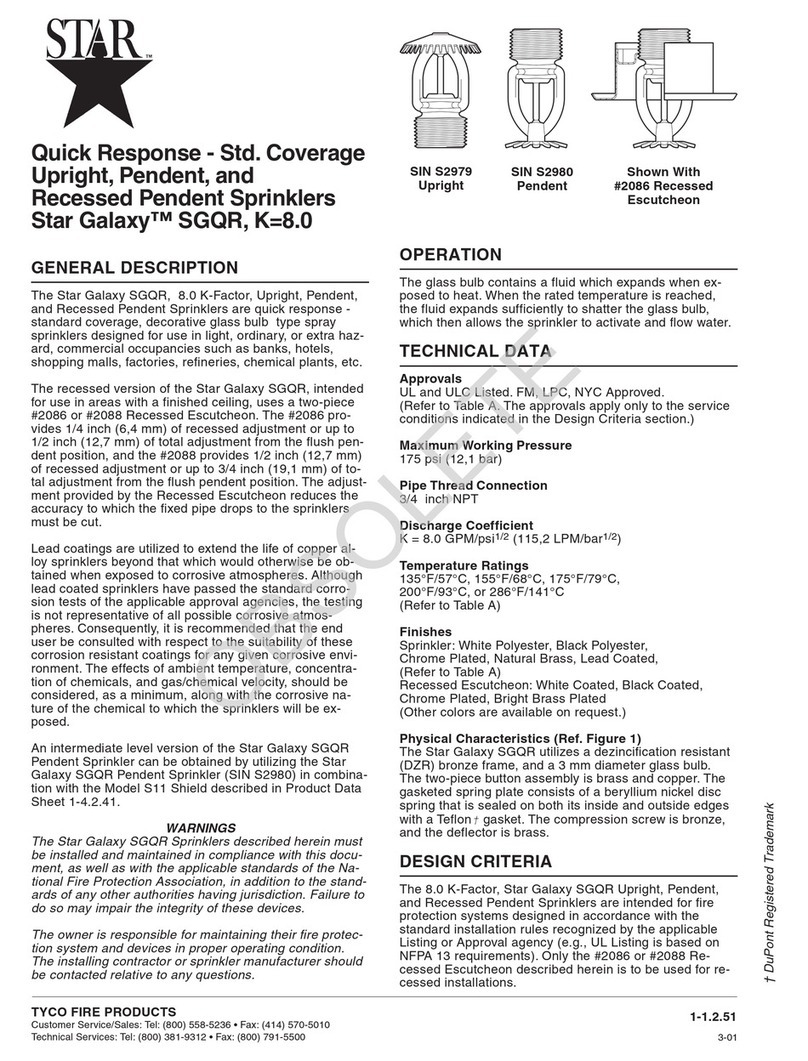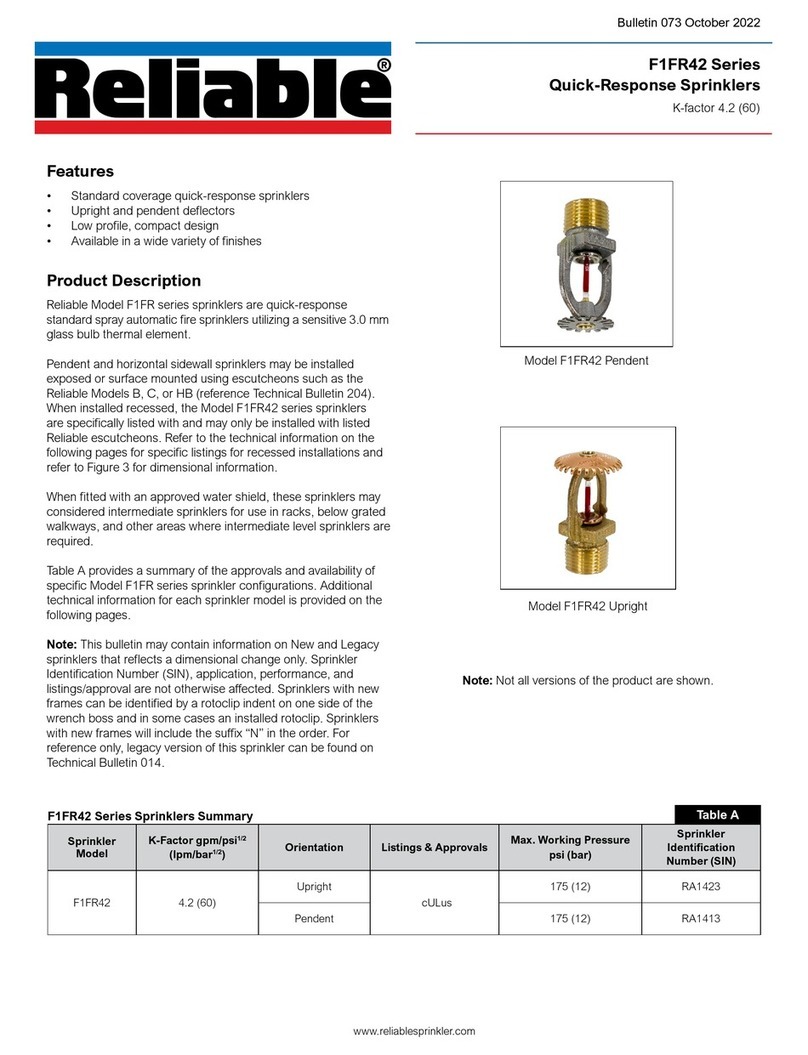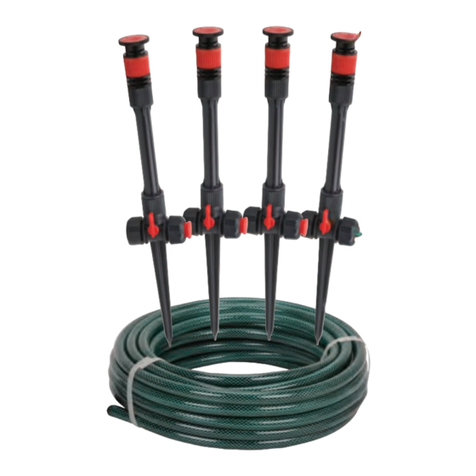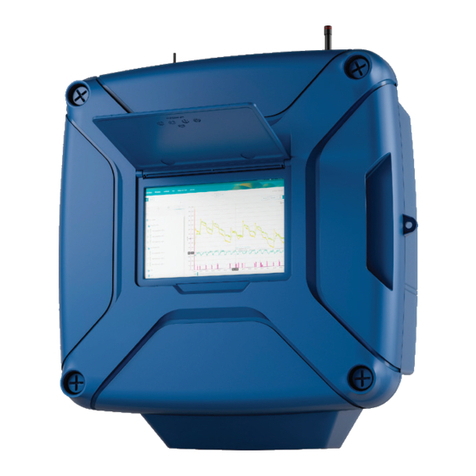
TFP1335
Page 9 of 26
Installation
TYCO DV-5 Deluge Valves are to
be installed in accordance with this
section.
NOTICE
Proper operation of the DV-5 Deluge
Valves depends upon their trim being
installed in accordance with the
instructions given in this Technical Data
Sheet. Failure to follow the appropri-
ate trim diagram may prevent the DV-5
Valve from functioning properly, as well
as void approvals and the manufactur-
er’s warranties.
The DV-5 Valve must be installed in a
readily visible and accessible location.
The DV-5 Valve, associated trim, and
wet pilot lines must be maintained at a
minimum temperature of 4°C.
Heat tracing of the DV-5 Valve or its
associated trim is not permitted. Heat
tracing can result in the formation of
hardened mineral deposits that are
capable of preventing proper operation.
The DV-5 Deluge Valve is to be installed
in accordance with the following
criteria:
Step 1. All nipples, fittings, and devices
must be clean and free of scale and
burrs before installation. Use pipe
thread sealant sparingly on male pipe
threads only.
Step 2. The DV-5 Valve must be
trimmed in accordance with one of the
trim illustrations shown in Figures 7 thru
18, as applicable.
Step 3. Care must be taken to ensure
that check valves, strainers, globe
valves, etc. are installed with the flow
arrows in the proper direction.
Step 4. Suitable provision must be
made for disposal of drain water. Drain-
age water must be directed such that
it will not cause accidental damage to
property or danger to persons.
Step 5. Connect the Diaphragm Supply
Valve to the inlet side of the system’s
Stop Valve in order to facilitate setting
of the DV-5 Valve (Ref. Figure 19).
Step 6. An Inspector’s Test Connec-
tion, as described in the Wet Pilot Actu-
ation and Dry Pilot Actuation sections,
must be provided for Wet or Dry Pilot
Actuation systems.
Step 7. An Air Maintenance Device,
as described in the Dry Pilot Actuation
section, must be provided for Dry Pilot
Actuation.
Step 8. A desiccant dryer, when spec-
ified for Dry Pilot Actuation, is to be
installed between a drip leg and the
Air Maintenance Device.
Step 9. The Low Pressure Alarm Switch
for Dry Pilot Actuation is to be adjusted
as follows:
• Low pressure alarm setting at
approximately 0,4 bar below the
minimum pilot line service pressure
requirement shown in Graph B
• Fire alarm setting at approximately
1,0 bar below the minimum pilot line
service pressure requirement shown
in Graph B
Step 10. The Pressure Relief Valve pro-
vided with the Dry Pilot Actuation Trim
is factory set to relieve at a pressure of
approximately 3,1 bar, which can typi-
cally be used for a maximum dry pilot
actuation system pressure of 2,8 bar.
The Pressure Relief Valve may be reset;
however, it must be reset to relieve at
a pressure which is in accordance
with the requirements of the authority
having jurisdiction.
To reset the Pressure Relief Valve, first
loosen the jam nut and then adjust
the cap accordingly — clockwise for
a higher pressure setting or counter-
clockwise for a lower pressure setting.
After verifying the desired pressure
setting, tighten the jam nut.
Step 11. Conduit and electrical con-
nections are to be made in accordance
with the applicable standards of the
Approval agency.
Step 12. Before a system hydrostatic
test is performed, the DV-5 Diaphragm
Chamber is to be depressurized, the
Automatic Drain Valve is to be tem-
porarily replaced with a plug, and the
Diaphragm Cover Bolts must be uni-
formly and securely tightened using a
cross-draw sequence. After tighten-
ing, double-check to make certain that
all of the Diaphragm Cover Bolts are
securely tightened.
